“There’s people down here!”
“Yeah, watch it, you Austrian pigs!”
Jesse Mattner and I were yelling to no one—no one who could possibly hear us anyway. Rockfall rained and we cowered closer to our anchor of 80-year-old pitons, protruding like little black roots, necrotic and flexing in the shattered stone. We were a mere 300 feet below the summit of the Cima Grande, one of the six great north faces of the Alps. Toasters and microwaves whistled down, dislodged by a clumsy team on the summit.
You always hear the biggest ones before you see them. A sound that shrieks like an incoming missile.
“I’m too scared to move,” I said. But that wasn’t the main problem. We had no good idea where on this massive mountain we were. Nothing in the topo I’d uploaded to my iPhone made sense anymore.
And, of course, it was getting dark. Thunder clapped.
Jesse is my good friend from Denver and, since we both love espresso, chianti and long routes, we had been dreaming about coming to the Dolomites for over a year. Jesse is 31 years old, 6’2” when he slouches, and a buck-ninety-five on a lean day. He’s got the flexibility of an iron rod and gets worked on the overhangs, which, ironically, he enjoys most. When it comes to the run-out techy slab stuff, he swears he hates it, but he’s as light-footed as a dancer and cool-headed as a sniper.
“I was cursed when god made me good at slab climbing,” Jesse once groaned sadly.
Our day on Iso 2000 had begun with seven pitches of fantastic climbing up to 5.12a—steep and fun, with fixed gear in the right spots and bolted belays. Perfect rock and interesting moves made me smile. I thought, This is nothing like I imagined the Dolomites would be. This is great!
Now we’d gotten off route, onto some wet, dangerous chimneys—part of the ultra-classic Comici Route (5.10), as I’d later learn. We were cold, lost and scared. Secretly I wished Jesse would give me a big man-hug.
It was my lead, and a respite in the rockfall encouraged me to head up. This was just basic 5.10 mountaineering—which most climbers are capable of, but few dispatch with any style. Moving efficiently and quickly on moderate alpine terrain is an art form, as impressive to me as a 5.13 redpoint.
And here I was, an average punter just trying to get away with it.
Climbing on double ropes, I battled horrible drag—Herculean drag! Despite trying everything from using longer slings to not placing any protection, I came up shy of a couple of belay ledges when I could no longer press out a 5.5 move because it felt like an angry 200-pound midget was hanging off my waist.
I stopped mid-pitch and MacGyvered an A5 anchor out of a nest of rotten pins that I thought would look quite nice in one of Reinhold Messner’s museums, just down the road. Shit was bleak, dude! I prayed that the big boy on the other end of the rope shall not weight it.
On the up side, I’d become so absorbed in my multi-pitch fumbling that I forgot to be afraid about getting The Chop from a falling rock.
The whistling of an earthbound pony keg snapped me alert. It was then that I realized that this moment, right now, was everything I had imagined the Dolomites would be.
I smiled.
This is great!
There are an overwhelming number of geological, cultural and historical ingredients that make the Dolomites in northern Italy one of the most fascinating places you could ever visit. But for climbers’ purposes, I can cut to the chase and give you two reasons why visiting the Dolomites is mandatory.
One: Access. It’s incredible. Over 100 refugios are strategically placed throughout this craggy 90,000-acre region, recently named a UNESCO World Heritage Site. These refugios range from austere backcountry huts to full-service roadside hostels that serve breakfast, dinner, beer and espresso.
Another way of describing the refugios is that they are “pimped-out cribs,” offering climbers a convenient base from which they may subsequently “ball hard.”
You don’t need a stove, and can get away without a sleeping bag. Wake up in a dorm-style bed, head downstairs for a delicious espresso, rack up and after a short approach, you are in the big mountains.
Two: Speed. You can climb some really huge, really steep faces really quickly—often with just a slim rack and one rope. With rather straight-forward face climbing, and often ample fixed gear, the Dolomites are a place where you can waltz up a 1,200-foot face during the day, and be back at the refugio in time for the carbohydrate bomb that is your standard three-course Italian dinner.
Getting to climb a big, steep mountain without being bogged down by the typical logistical drudgery is why the Dolomites are probably the most fun multi-pitch destination in the world.
That said, the Dolomites are known as one of the chossiest areas you’d ever want to visit, a danger celebrated by some and considered by most a reason to stay away.
But I am here to report that this is a Myth! A sandbagging lie designed by the sandbagging liars who want to keep people away so they can have all the fun to themselves.
OK, now I’m the one exaggerating. But, honestly, the rock looks worse than it actually is. Once you learn to read it, you learn to love it.
Stereotypes, as we well know, are often rooted in an uncomfortable truth, and the reputation for “choss” mostly applies to areas’ more popular routes. There’s a term for these climbs; it’s “Classic Moderates.”
On my short trip, I unintentionally strayed from the Classic Moderates, finding myself gravitating toward the Modern Classics. Finding these latter lines meant seeking beta from the right people and doing a bit of online research, as most of the guidebooks printed in English are outdated. My experience was that the Classic Moderates were more dangerous and crowded, while the harder (5.11 and up) “modern” (bolted) routes were safer and empty of other climbers.
It’s a toss up as to which style is more “fun.” But, fortunately, as my experience on Iso 2000 proved, you can easily find both types of fun on the same route.
Rolo Garibotti, the living legend of Patagonian alpine climbing and one of the most humble dudes you could ever meet, has recently chosen to base himself out of the Dolomites. Rolo is an encyclopedia of knowledge, and was more than pleased to share. We met up at an underground sport-climbing crag, just 300 yards from his new home in the town of Laste, so I could get the good beta.
The climbing here is on an unmistakable crown of bullet blue rock: 200 feet tall, gently overhanging and some of the best I’ve ever pulled. I had no idea that there was really great single-pitch sport climbing in the Dolomites, but there is, including a few places to go when it rains, which is frequently an issue.
A via ferratta leads to the crag’s summit, where there is a hut built for local picnickers. From here—from everywhere in the Dolomites—the countryside drapes precipitously away … then quickly rises again into the most impossible-looking megaliths. Cow and sheep pastures roll plush and verdant. Bells toll from Renaissance-era churches. Medieval castles stand strong. To the south is Marmolada, the tallest peak in the Dolomites, where there is skiing on the north side and the best limestone in the range on the south. Its massive south face is essentially as broad and tall as three El Caps lined up side by side.
It’s the most arresting relief imaginable, rising and falling in all directions, as dizzyingly hypnotic as an Escher. All the photos I’d ever seen of the Dolomites completely failed to do this landscape justice.
History is everywhere—you can see it, feel it, breathe it. During World War I, the Dolomites were the brutally contested frontline between Italy and the Austro-Hungarian Empire. Remnants of the fierce warfare remain, including mountainside bunkers and the network of trails built by soldiers advancing their positions. These trails are now used by climbers approaching routes and by vacationing Austrian families approaching grassy knolls, where they will surely be singing the Sound of Music, or whatever it is non-climbers do with their time.
A secret soldier village was once literally carved inside the Marmolada’s glacier. As this and other glaciers melt—glaciers in the Dolomites have shrunk by 40 percent in the last 50 years—WWI-era artifacts have been emerging such as sardine tins, can openers, guns and human bodies. Last summer, the interred remains of two Austro-Hungarian soldiers were found on the neighboring Presna glacier by employees of a company hired to cover the ice with giant tarpaulins to mitigate the melting.
Rolo and I chatted at Laste, and he happily recommended some Modern Classics that weren’t in the guidebooks. He then offered what ended up being the most important piece of advice I received on this trip:
“Everyone’s human,” he said. “Just remember that when you’re facing a big run-out. If it looks like there’s no gear, the climbing is probably easy and you just need to stay calm and find the jugs. Look left, look right. Gear usually appears when the moves get hard.”
After a wicked day at Laste, Jesse and I ventured to Tre Cime—certainly the most famous and historic area of the Dolomites.
Jesse’s wife, Marni Mattner, was with us. She was four months pregnant and one of the most psyched (borderline obnoxious) expectant mothers I’d ever seen. At 6 feet tall, and skinny as a bean pole, Marni had the tiniest little belly protruding, which I could tell she was pushing out to make herself look as pregnant as possible.
The three of us joined a zillion other trekking-pole-carrying tourists in hiking around the Tre Cime di Lavaredo (9,839 feet) to admire its three fantastic summits: the Cima Piccola (Little Peak), Cima Grande (Big Peak) and Cima Ovest (Western Peak). We found a nice, photogenic spot to wait for the sun to glance across the massif’s cold north faces just before it would set.
“Jesse, can you get a picture of me in front of the Cima Grande?” Marni asked. “Make sure you get my belly in it.” This was only the 50th photo Jesse had taken of Marni’s gravid profile in front of some famous Dolomites landmark.
Marni assumed her contrapposto pose, pushing her belly out toward the great nordwand.
“God, you’re so pregnant!” Jesse beamed, snapping shots like a proud papa-razzi.
 I was most excited to climb the Cima Grande, but thought we should warm up on one of the other classic faces in the area first. The next day, we split up. Jesse joined forces with a friend from Lecco, Marco Gianolo, and they opted for the Spigolo Giallo (5.10a), the “Yellow Edge” of the rocket-shaped Cima Piccola.
I was most excited to climb the Cima Grande, but thought we should warm up on one of the other classic faces in the area first. The next day, we split up. Jesse joined forces with a friend from Lecco, Marco Gianolo, and they opted for the Spigolo Giallo (5.10a), the “Yellow Edge” of the rocket-shaped Cima Piccola.
First climbed by Renato Zanutti, Mary Varale and Emilio Comici in 1933, the 350-meter Spigolo Giallo was once considered one of the most badass routes in the Alps, and today it is one of its most popular. It is the ultimate Classic Moderate.
“It’s the most exposed climb one can imagine,” wrote Comici of his ascent. “We experienced two days of raging battle on this route, clinging to microscopic holds, while she defended herself with torrents of falling stones.”
Jesse took away a different experience.
“That was one of the worst routes I’ve ever done,” he groaned, once back at the refugio. “Horrible belays; polished rock; easy, boring climbing and the most crowded route I’ve ever been on.”
 My route, however, was great. (Sorry, Jesse!) The retired competition climber Cristian Brenna and I tackled the Gelbe Mauer (5.12a), a completely bolted 330-meter sport climb established by Kurt Albert and Stephan Glowacz in the mid 1990s. Also located on the Cima Piccola, the Gelbe-Mauer takes a sustained line of crimps up the overhanging face, with belay ledges every 30 meters. By the eleventh pitch, my forearms were horribly cramped, and the only reason I didn’t fall was because I continually reminded myself to go back to basic climbing technique: don’t muscle through any move; straight arms; use your feet. One of the great joys of multi-pitch onsighting is how demanding it is, requiring nothing short of perfection for such a sustained period of time. These big routes bring out the best—and worst—in us all.
My route, however, was great. (Sorry, Jesse!) The retired competition climber Cristian Brenna and I tackled the Gelbe Mauer (5.12a), a completely bolted 330-meter sport climb established by Kurt Albert and Stephan Glowacz in the mid 1990s. Also located on the Cima Piccola, the Gelbe-Mauer takes a sustained line of crimps up the overhanging face, with belay ledges every 30 meters. By the eleventh pitch, my forearms were horribly cramped, and the only reason I didn’t fall was because I continually reminded myself to go back to basic climbing technique: don’t muscle through any move; straight arms; use your feet. One of the great joys of multi-pitch onsighting is how demanding it is, requiring nothing short of perfection for such a sustained period of time. These big routes bring out the best—and worst—in us all.
The more I saw of the Dolomites, the more it became clear how perfectly constructed these mountains are for free climbing. Holds are everywhere. The metamorphic limestone is distinct for two characteristics: its blocky shape (good for hand holds) and its pale color, which, in the right sunlight, reflects a palette of warm hues. In fact, prior to the French geologist (and infamous ladies’ man) Déodat de Dolomieu’s identification, in 1792, of the mineral composition of the rock as stratified calcium-magnesium carbonate, the Dolomites were simply called the “Pale Mountains.”
But it wasn’t always about free climbing here—at least not as we know it today. From the early 1900s up until the 1960s, the biggest climbs often served nationalistic purposes and were overcome with aid. These direttissimas—literally the most “direct line”—were born out of a sense of public spectacle, of climbing straight up the steepest, biggest face by any means necessary. Though aesthetic from a distance, in reality direttissimas often resulted in excessive bolting and sometimes ignored natural paths.
Tre Cime became the unfortunate cynosure of the direttissima age, beginning with the 550-meter north face of the Cima Grande. In the 1930s, almost 20 different teams had failed to ascend this impossible-looking wall, making it one of the most beguiling objectives in the world.
Born in 1901 in Trieste, Emilio Comici had discovered climbing in his late 20s and quickly became one of Italy’s top alpinists. Though successful on various objectives in the Dolomites and the greater Alps, Comici was magnetized to Tre Cime, and he worshipped its three battlement-like summits, calling them his “Indian Gods.”
“Like a drop of water falls from the summit, that’s the line I shall take,” Comici famously said.
In 1933, leading the brothers Giovanni and Angelo Dimai, Comici fought his way up the north face of the Cima Grande over three long days, ultimately succeeding on its coveted first ascent. The achievement brought this “Angel of the Dolomites” instant fame, but many Italian climbers criticized Comici for aid climbing and placing too many pitons.
Ah, the more things change!
Four years later, Comici silenced his critics’ cannoli holes by soloing the route.
Comici died at age 39 in 1940. He was climbing with a hot Italian woman, who he was trying to impress by leaning out from the wall. Then his clothesline rope, which he was inexplicably using, snapped. Arrivederci. 🙁
Today, the Comici-Dimai (5.10d, 1,800 feet) is the most popular line on the Cima Grande. All cruxes are easily aided, which most parties take advantage of when they find the climbing so surprisingly steep and sustained.
Yarding on gear seems to be widely enjoyed by today’s casual Dolomites enthusiasts, which, from what I observed, mostly belonged to a rather senior demographic. In my brief travels, I saw almost no climbers under 30. I will hypothesize that you generally won’t find too many young climbers in any area that employs UIAA ratings. It’s probably just too confusing to translate the Roman numerals to 8a.nu points.
Though many of the climbs during the early to mid 1900s were ethically questionable by today’s standards, the Dolomites was actually the “Oliana” of the day: i.e., it was the place where all the best climbers went to shred the sickest gnar-gnar ever sent by humanoids.
One standout was Raffaele “Biri” Carlesso, who was 40 years ahead of his time when he climbed 5.11c, barefoot, on the Torre Trieste in 1934. This route remained unrepeated until “Manolo” Zanolla got the second ascent in 1979! Obviously a free-climbing prodigy, Carlesso was also one of the first true soul climbers. He shied away from fame and accolades, and continued climbing until he was too old to hang on, doing the Comici-Dimai on the Cima Grande at age 71, and Scoiattoli Direct on Torre Grande d’Averau at 80. He lived quietly and died in 2000 at the age of 92.
Women played an interesting, influential role in the early years. Shout out to the Hungarian baronesses and sisters Rolanda and Ilona von Eötvös. They hired the day’s best mountain guide, Antonio Dimai, and established a 2,600-foot 5.7 on the Tofana di Rozes in a single day in 1901. What up, Rolanda and Ilona!
Also, Big Ups to Beatrice Tomasson—a daughter of a British captain of industry, and herself an expert horse rider and tutor of Prussian generals’ children. Beatrice joined the guides Michele Bettega and Bortolo Zagonel on the first ascent of the 2,100-foot south face of the Marmolada (5.8), also in 1901, and also completed in just a day.
But because people like to focus on the negative shit, much of the Dolomites’ history dwells on the direttissimas. This style of ascent climaxed in 1967 with the egregious Camilotto Pellissier route on the left side of the Cima Grande’s north face. During the eight-day FA, Enrico Mauro and Mirko Minuzzo placed upwards of 340 expansion bolts and 50 pitons, sometimes 18 inches apart. The glut of metal inspired Reinhold Messner to write, the same year, his game-changing polemic “Murder of the Impossible,” in which he called for an end to the direttissima:
“Sometimes the line of weakness wanders to the left or the right of this line,” wrote the hirsute Tyrollean. “And then we see climbers—those on the first ascent, I mean—going straight on up as if it weren’t so, striking in bolts of course. Why do they go that way? ‘For the sake of freedom,’ they say; but they don’t realize that they are slaves of the plumb line.”
 The next year, 1968, Messner pulled off one of the most important first ascents of his rock-climbing career. Climbing with his brother, Gunter, and wearing clunky boots, Reinhold climbed the Middle Pillar of the Sasso della Croce, placing no bolts, and onsighting cryptic, unforgiving slabs up to 5.11d. Climbing up, climbing down; battling self-doubt and summoning the belief to continue, Reinhold achieved something immeasurable at the time. People didn’t really know what to make of his route. The Sasso della Croce wasn’t one of the major faces, and didn’t have that spectacle appeal held by, say, the south face of Marmolada. Strangely, Reinhold received almost no recognition for his achievement at first.
The next year, 1968, Messner pulled off one of the most important first ascents of his rock-climbing career. Climbing with his brother, Gunter, and wearing clunky boots, Reinhold climbed the Middle Pillar of the Sasso della Croce, placing no bolts, and onsighting cryptic, unforgiving slabs up to 5.11d. Climbing up, climbing down; battling self-doubt and summoning the belief to continue, Reinhold achieved something immeasurable at the time. People didn’t really know what to make of his route. The Sasso della Croce wasn’t one of the major faces, and didn’t have that spectacle appeal held by, say, the south face of Marmolada. Strangely, Reinhold received almost no recognition for his achievement at first.
Yet Messner’s route was a full number grade above the world standard. It took the failures of many other strong climbers for the world to appreciate what Reinhold had accomplished, particularly on the crux “Messner Slab,” which would eventually become the most famous four meters of free climbing in the Dolomites.
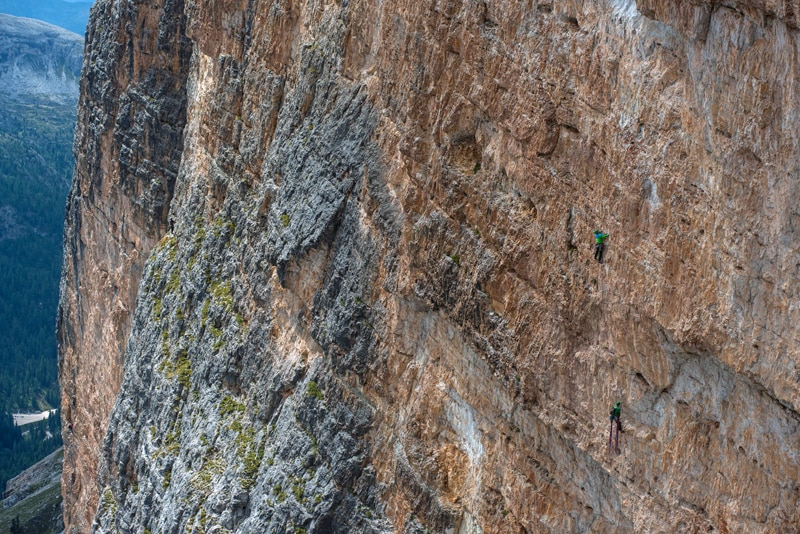
Thanks to Messner’s influential essay, and the emergence of strong free-climbing visionaries in the 1970s through the present day such as Heinz Mariacher, Christoph Hainz, Kurt Astner, Franck Kenez, Rolando Larcher, Mauro “Bubu” Bole, Massamo da Pozzo, Pietro dal Pra, Alex Huber, and Nicola Tondini, the age of the direttissima has been replaced with the age of the free climb.
“Bubu” freed the Camilotto Pellisier in 2003 at a grade of 5.13d, creating the hardest route on the wall at the time. Subsequent repeats have brought the grade down a bit. Last summer, the French power couple of Arnaud Petit and Stephanie Bodet nearly onsighted the route, downrating it to 5.13a and raving about its quality.
It’s ironic that the Camilotto Pellisier, the quintessential direttissima, is now being called one of the area’s better free climbs. Perhaps Mauro and Minuzzo were inadvertently lucky in terms of picking a good free line; you might say they nailed it first try.
One thing that sets the Dolomites apart from, say, Yosemite, is that Dolomites’ first ascentionists tend to leave most, if not all of, their pitons in place. Part of this style of route development was due to the lack of precedents, but climbers also realized that repeated placing and removal of pins damaged the rock, especially the already splintered limestone.
 Now many routes have pitons that are over 80 years old, and climbers have been discussing what to do about them. This is one of the more interesting debates in the Dolomites today. How much longer will the old pitons last before there’s a tragic accident? Should they be replaced with new pitons, potentially damaging the rock? Or should the pitons be replaced with well-spaced/placed bolts, an idea that arguably makes the most sense but also would most alter the character of these historic climbs?
Now many routes have pitons that are over 80 years old, and climbers have been discussing what to do about them. This is one of the more interesting debates in the Dolomites today. How much longer will the old pitons last before there’s a tragic accident? Should they be replaced with new pitons, potentially damaging the rock? Or should the pitons be replaced with well-spaced/placed bolts, an idea that arguably makes the most sense but also would most alter the character of these historic climbs?
Heinz Mariacher explains that the biggest issue isn’t the gear, necessarily, but the change in mentality of today’s climbers.
“In the 1970s, the pitons were already old and sometimes they came out or broke. So it was the normal use that everybody climbed with a hammer and some pitons for emergency or replacement. Nowadays everybody expects perfectly prepared routes. But is this Dolomite climbing?
“The Tre Cime area was an aid-climbers paradise in the 1950s and developed in modern times to a multi-pitch sport climbing area. With a few exceptions, I would compare it to user-friendly, perfectly prepared, groomed ski slope.”
 Well known in the U.S. for designing the best climbing shoes ever made, Mariacher was one of Italy’s leading free climbers in the 1980s, with redpoints up to 5.14a. During his early climbing years, in the 1970s in the Dolomites, he soloed the Comici on the Cima Grande, the Cassin (5.11/A0) on the Cima Ovest, and the ultra-classic Vinatzer on the Marmolada south face. He also completed the coveted second ascent of the Messner Route on the Sasso della Croce in 1979, and got the first free ascent of Il Pesce (5.12c), aka “The Fish”—the Marmolada’s most fearsome and famous free climb. Also here is Mariacher’s Tempi Modernissimi (5.13a), which he bolted ground up in 1986.
Well known in the U.S. for designing the best climbing shoes ever made, Mariacher was one of Italy’s leading free climbers in the 1980s, with redpoints up to 5.14a. During his early climbing years, in the 1970s in the Dolomites, he soloed the Comici on the Cima Grande, the Cassin (5.11/A0) on the Cima Ovest, and the ultra-classic Vinatzer on the Marmolada south face. He also completed the coveted second ascent of the Messner Route on the Sasso della Croce in 1979, and got the first free ascent of Il Pesce (5.12c), aka “The Fish”—the Marmolada’s most fearsome and famous free climb. Also here is Mariacher’s Tempi Modernissimi (5.13a), which he bolted ground up in 1986.
Il Pesce is quite dangerous, mostly because the route-finding is so challenging and the slabby moves are hard to reverse when you’re 50 feet run-out in the wrong direction. Many chuckleheads think that they’re up to the challenge of Il Pesce, and crawl away with broken legs.
“Perhaps I have an exaggerated awareness for style because I experienced climbing in the Dolomites before the arrival of sport climbing,” wrote Mariacher in an e-mail. “In the 1970s and ‘80s mountain climbing was a way for individual expression and liberation; it was a counterculture. Modern climbers are more practical: aggressively success oriented on one side and kind of lame public/media-serving on the other. The result is that contemporary Dolomites climbing has lost any connection to history and is basically just an uncomfortable copy of sport climbing.”
I contemplated this idea while absorbing the degree to which History is a living, omnipresent force here.
Fewer new routes are being established in the Dolomites today. For the most part, people come here to climb 80-year-old choss piles like the Spigolo Giallo. Meanwhile, the the more modern routes are empty.
Jesse and I stared up the south face of the Tofana di Rozes, one of the best faces in the Eastern Dolomites. Our objective was Sognanda L’Aurora (5.12c), a Modern Classic directly up the steepest section of the wall.
The first four pitches were rope-stretching 5.10s, each one extremely run-out with less than four bolts per pitch.
“I got this,” Jesse said. He deftly handled this block of delicate slab climbing that would’ve had me shitting my pants if it were my lead. Once again, I secretly wished to hug this big, beautiful man.
To our right was the South Arete (5.9) of the South Face Buttress—a Classic Moderate. From our exposed face, we watched no less than five parties crawling up exposed the fin of rubble. Then I turned my head and saw an expanse of steep mountains stretching out quite comfortably into the unfathomable distance.
It’s impossible to take in all these details at once. Our eyes can only focus on one point at a time. We look near then far; left then right. We see one handhold, one bolt, one piton at a time. And each piece of metal carries with it such an incredible story, a tableau of ultimate human drama. Now step back, and all you see is just a huge blank face.
Our views of reality are, at any given time, composite images stitched together by our brains in the way that we choose to see things. It’s impossible to take in any totality, especially that of the Dolomites.
Watching the ant-line of climbers crawling up the South Arete, I thought about such a small, select group of climbers that craft and shape our sport’s history. Do any of those people give a shit about climbing ethics? I wondered. Or are they just here to spend time in the mountains and gain a sense of accomplishment and self worth?
These questions are impossible to answer, and are perhaps even pointless because the composite that remains most vivid in my mind—the one I choose to see—is a lifetime of climbing in these mountains, from Classic Moderates of yesterday to the Modern Classics of today, soon to be Classic Moderates of tomorrow.
Thanks to CAMP for contributing the photography of Riky Felderer, for producing great equipment and for making this trip happen. This article originally appeared in Rock and Ice magazine.



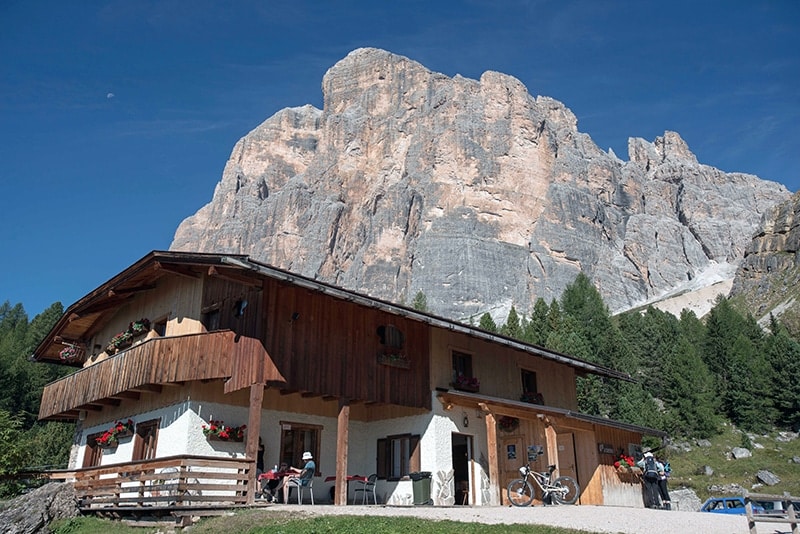
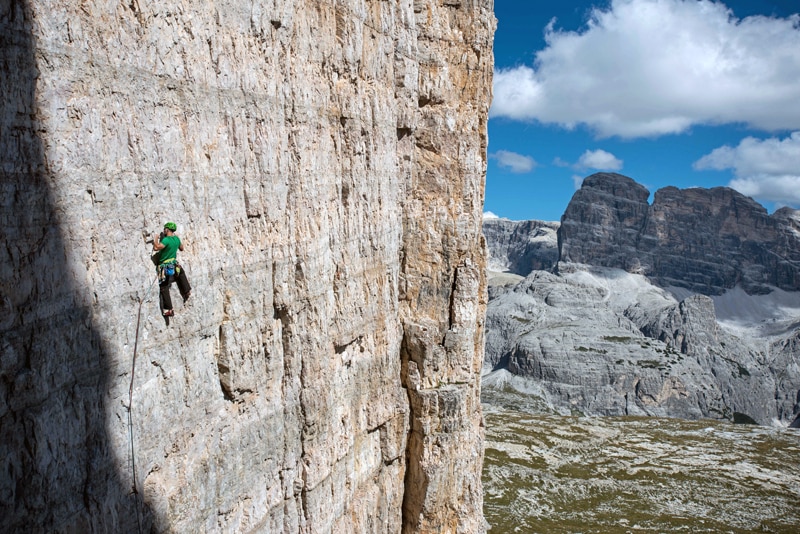

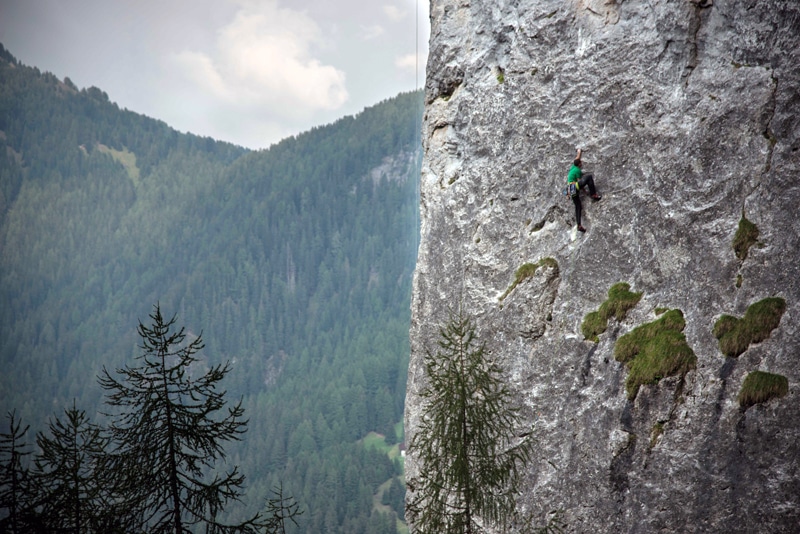

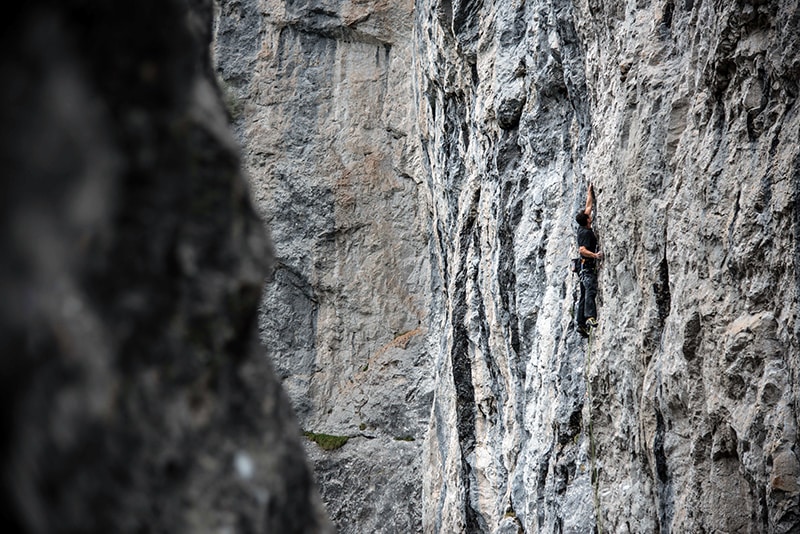

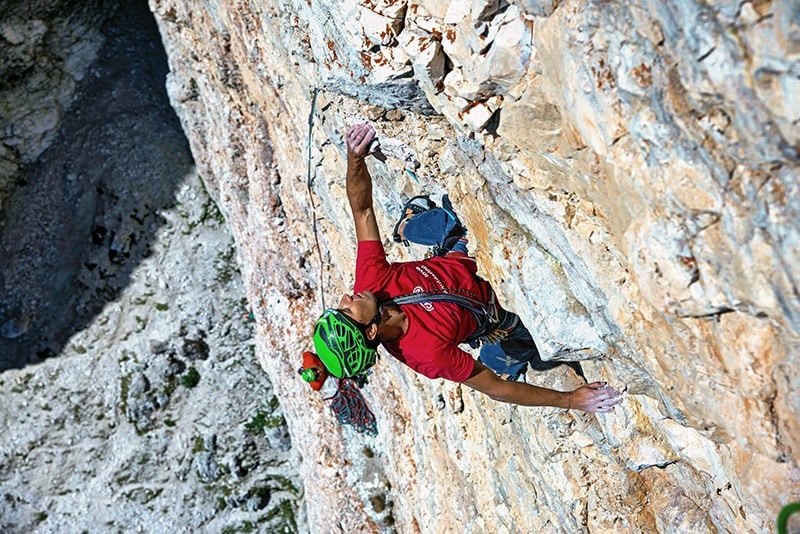
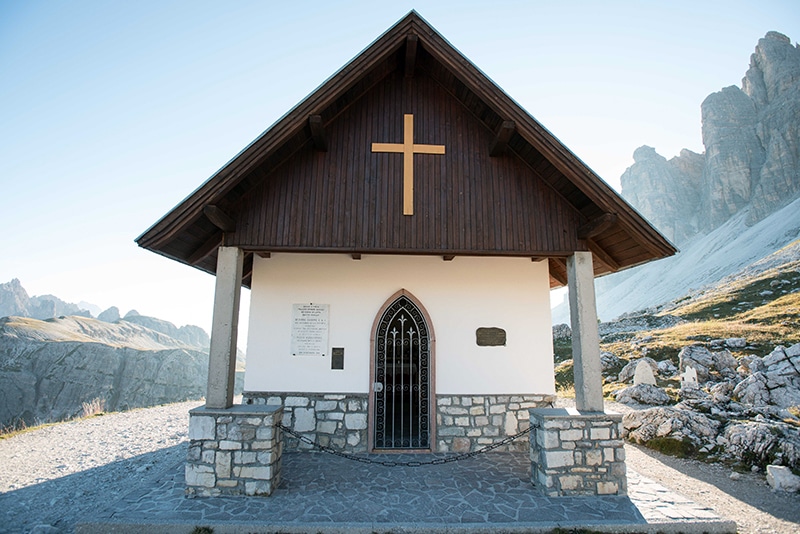
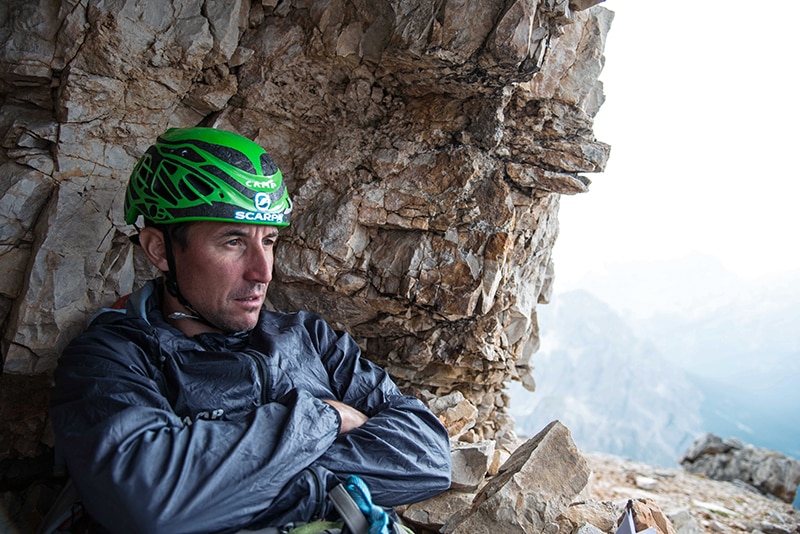

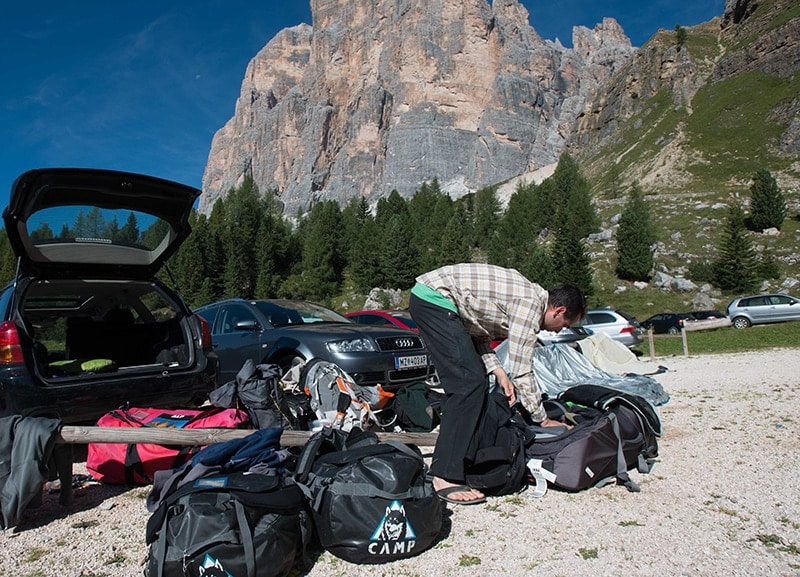
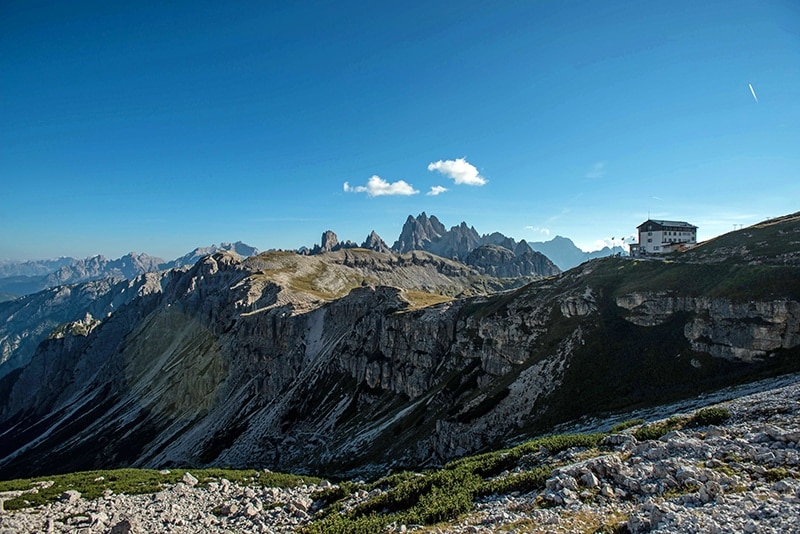
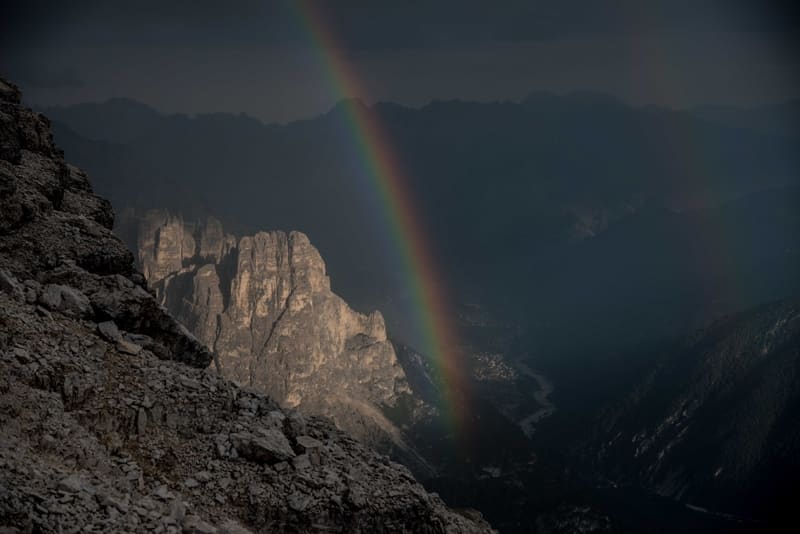
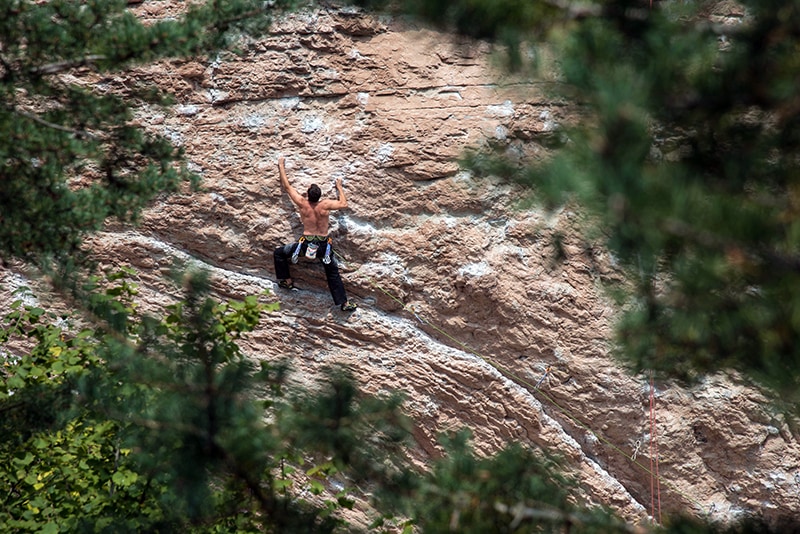
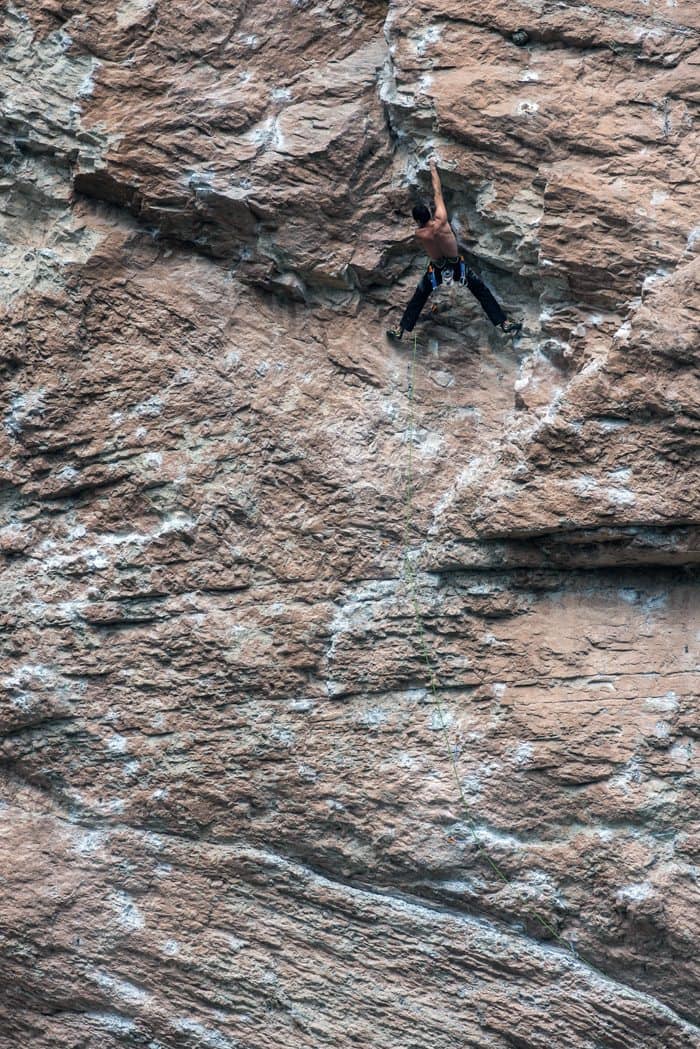
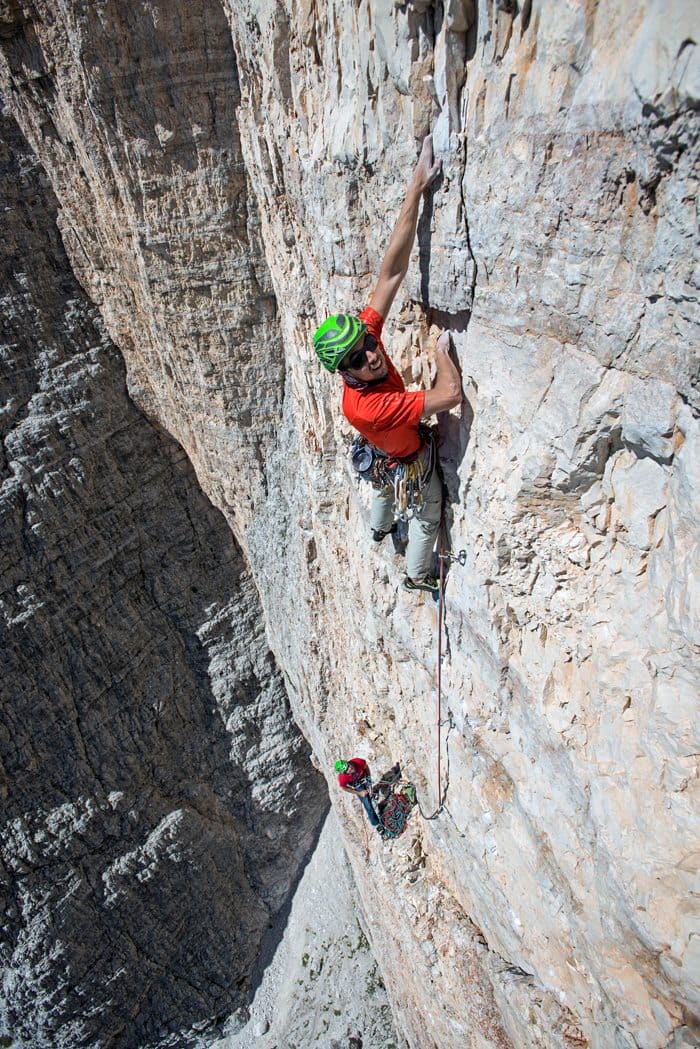
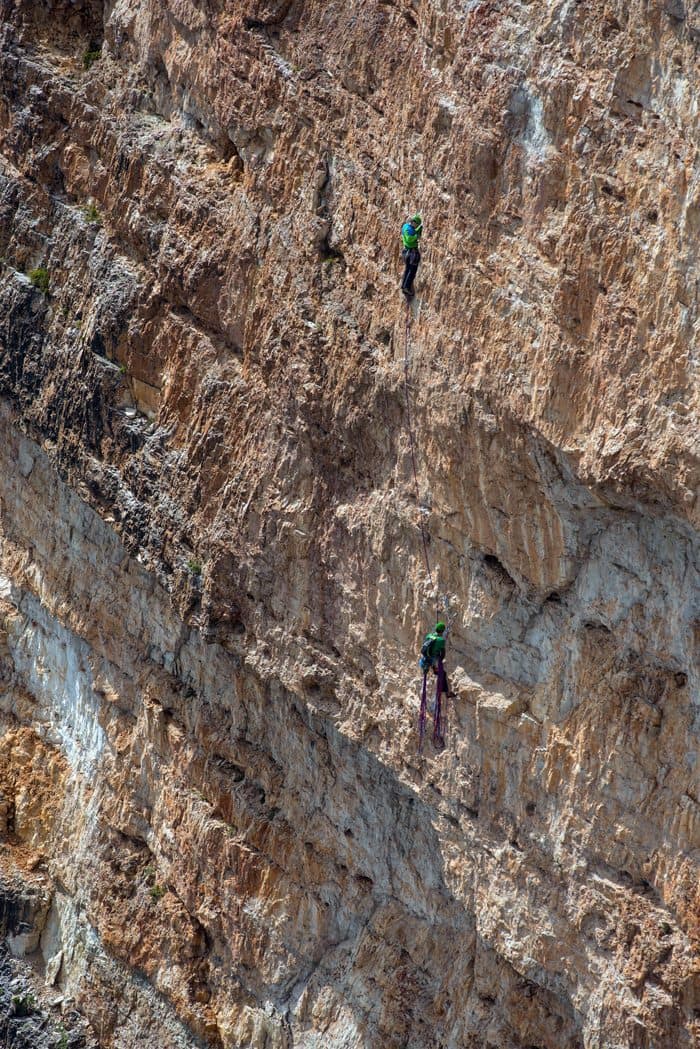

In which R&I it appeared?